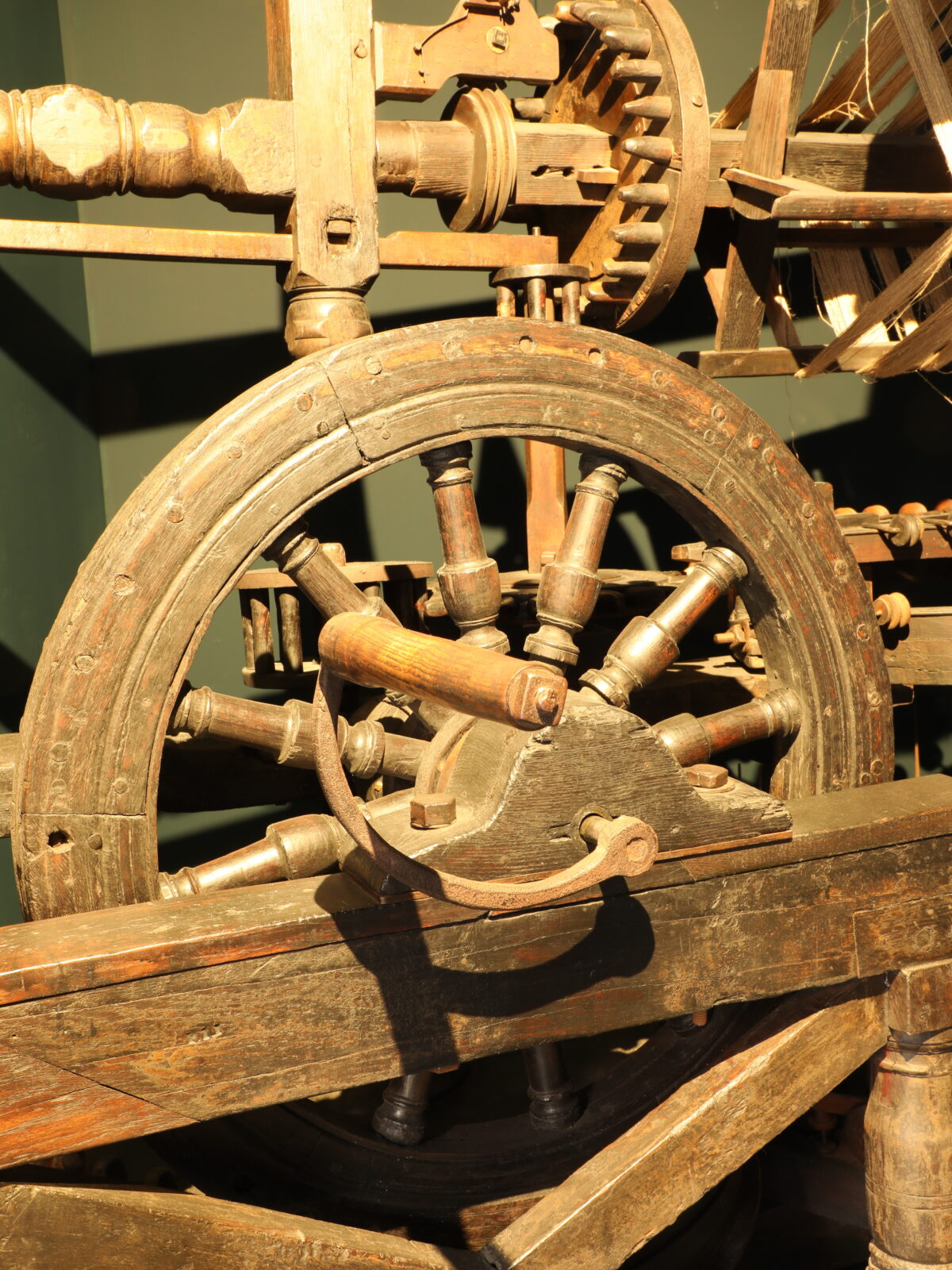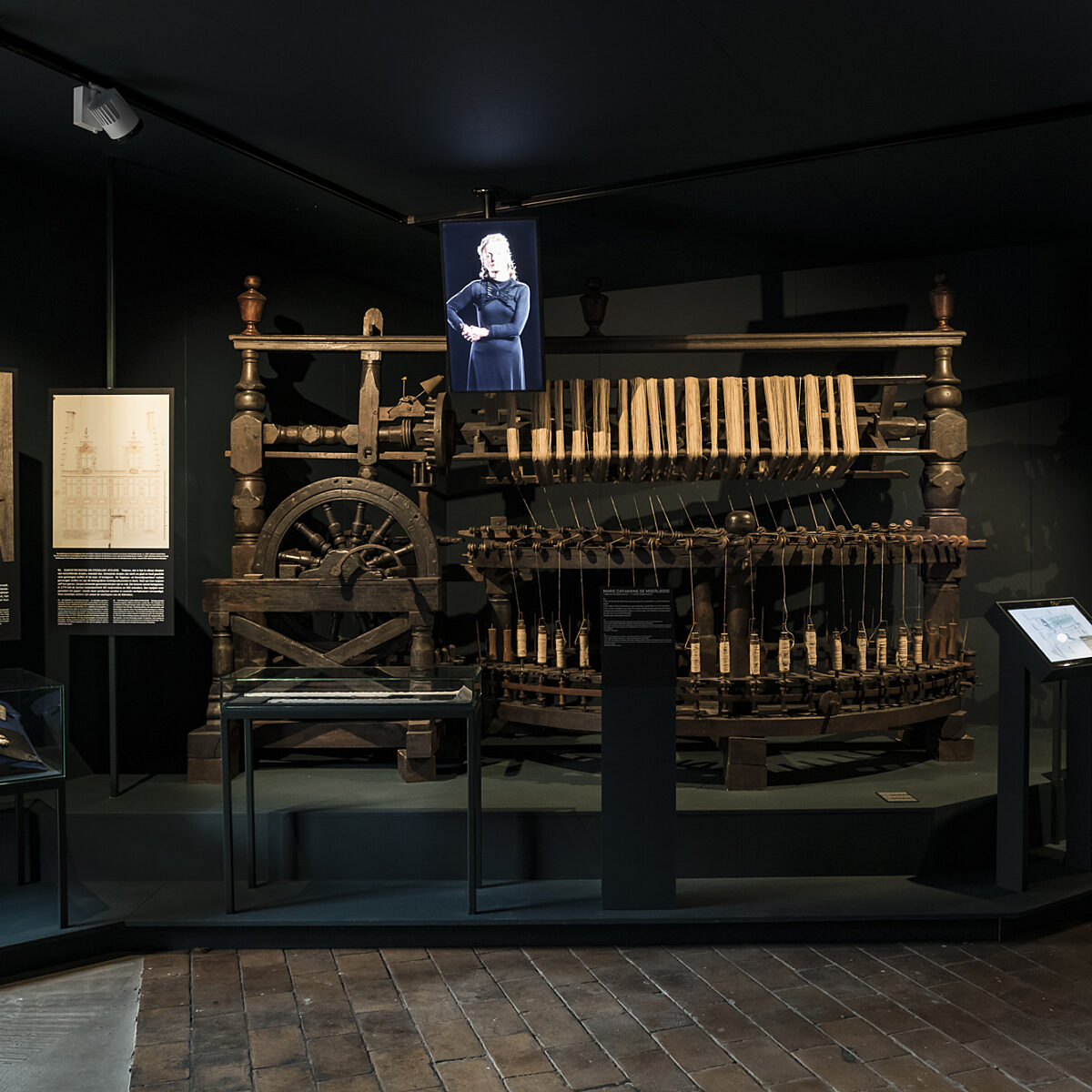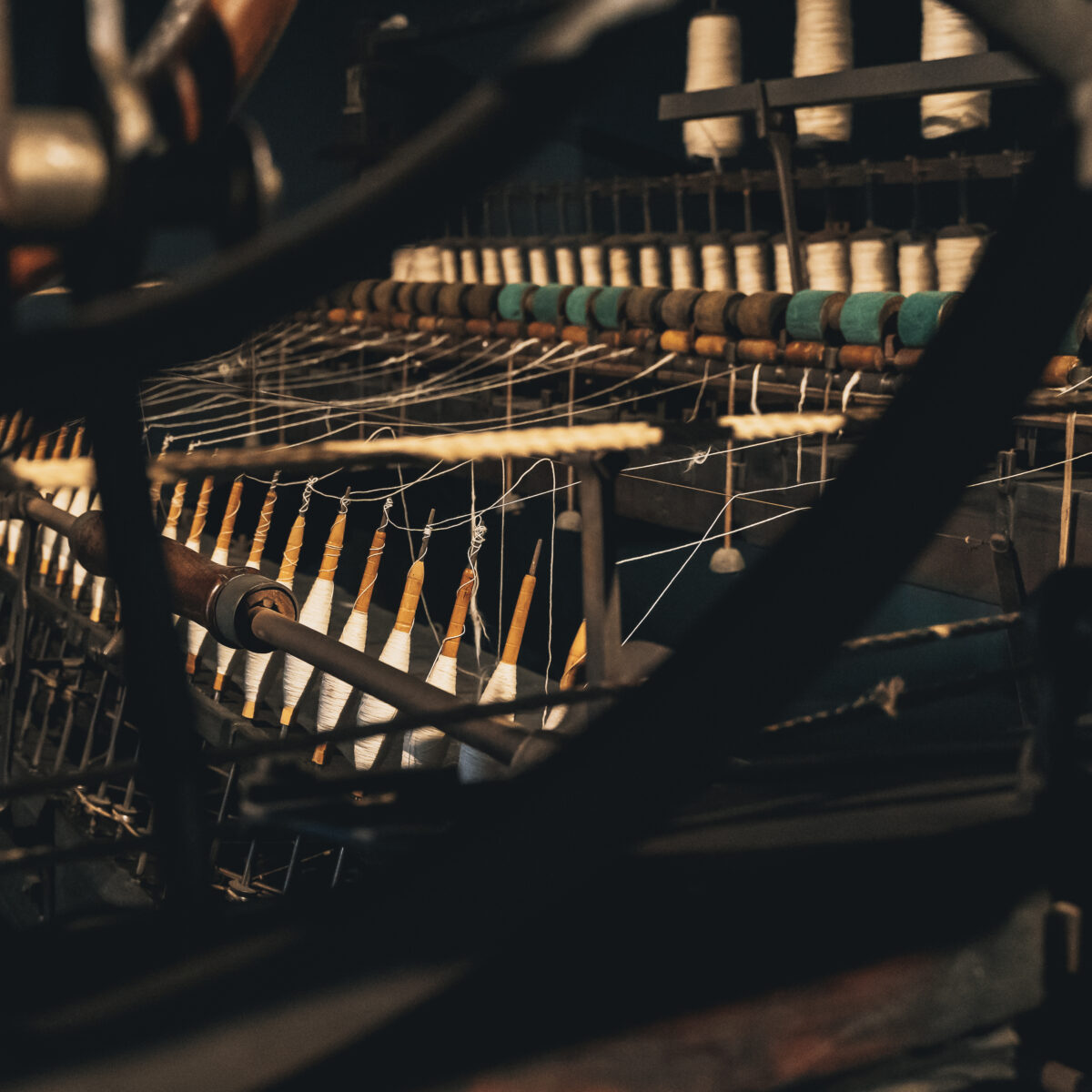Museum of Industry in Ghent
Research in line with preservation
Experts from KIK-IRPA subjected the Twine mill and the Mule Jenny of the Museum of Industry in Ghent to an in-depth, interdisciplinary analysis. This included documentary research, literature study, macro photography, X-ray fluorescence and technical and dendrochronological analyses. By synthesising the results of all individual research disciplines and thoroughly examining the historical documents mentioning the textile machines, the origin, age and functioning of the two machines became clearer. It was the first time our institute had studied large industrial machines.
The project, subsidised by the Flemish government, had been initiated as part of the preservation of the two masterpieces. By studying the Twine mill and the Mule Jenny in detail, we gained a better understanding of which pieces are original and which are more recent additions or repairs, which happened, for example, because of wear and tear on the machinery. This information is important in the decision-making process on conservation and restoration of the objects. Thanks to the research, the Museum of Industry now knows even better under which light and temperature conditions it should preserve the machines.
"The research is exceptional: for the first time we examined industrial machinery rather than paintings or buildings. We took a similar approach and used X-rays and annual ring surveys, among other methods. However, it was not easy to take wood samples because we were only allowed to do non-destructive work and dismantling just like that was not allowed."

The oldest in the world
The Twine mill, which was used for twisting or 'twining' several spun threads into a stronger thread, appears to date from the mid-18th century and is the oldest remaining mill of its kind. This certainly makes it older than 1789, the year carved into it. Dendrochronological analyses showed that the oldest year ring in the oak wood that could be sampled dates from 1655. Consequently, the Twijnmolen was definitely manufactured later than 1655. The baroque design of the machine suggests a dating in the second quarter of the 18th century. After studying all the technical features; the parts and gears, their size and functionality, researchers were also able to compile a manual on the use of the device for the first time. After all, no one ever saw the Twine mill in action, either in real life or in images.

The Mule Jenny, the famous English spinning machine, also turns out to be the oldest preserved specimen of its kind. It is also the most complete wooden mule jenny in the world. However, it may not be the legendary Mule Jenny that was smuggled from England to the mainland, part by part, by Ghent entrepreneur Lieven Bauwens in 1798, although this hypothesis still cannot be completely ruled out. For this, further examination of the oak structure is necessary. However, the Mule Jenny can almost certainly be situated at the beginning of the 19th century, perhaps before about 1810. How the device works was already known. The machine was demonstrated back in the 1970s. Today this is no longer done, but the functioning of the machine is reproduced digitally, so that the original machine is spared and can shine in the exhibition even longer.










